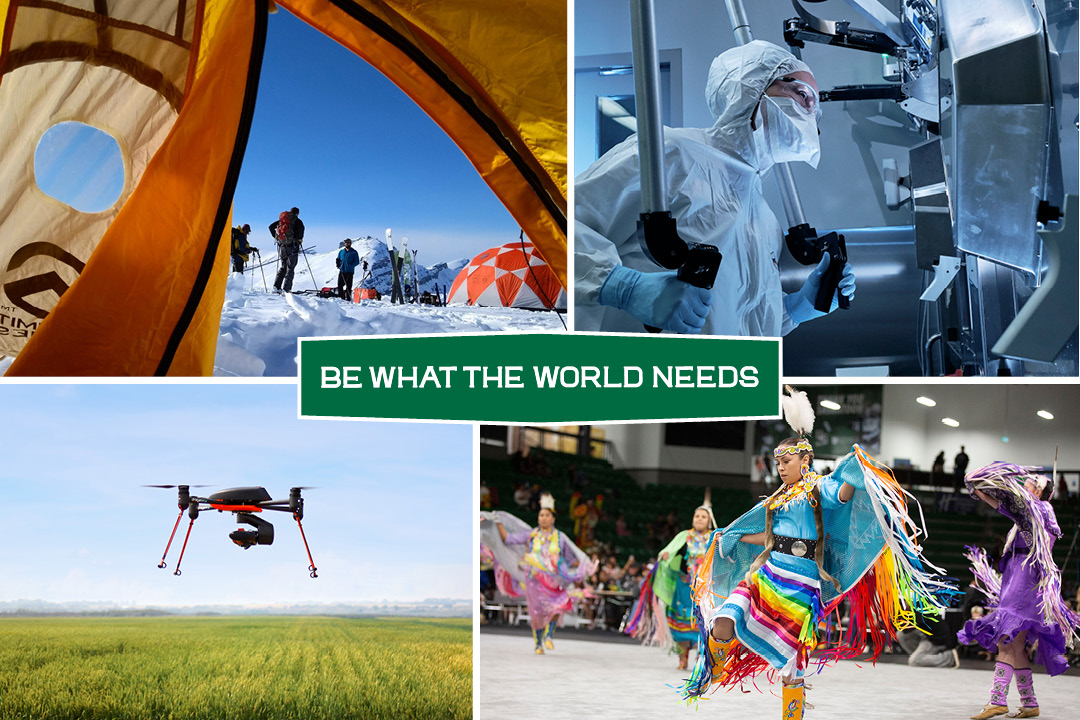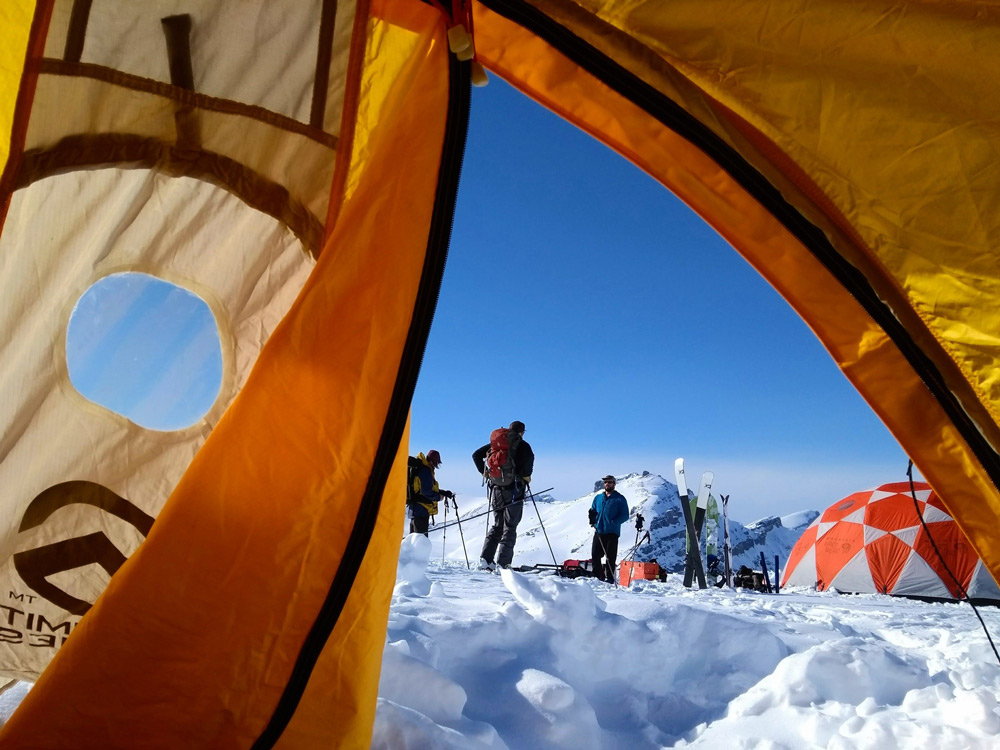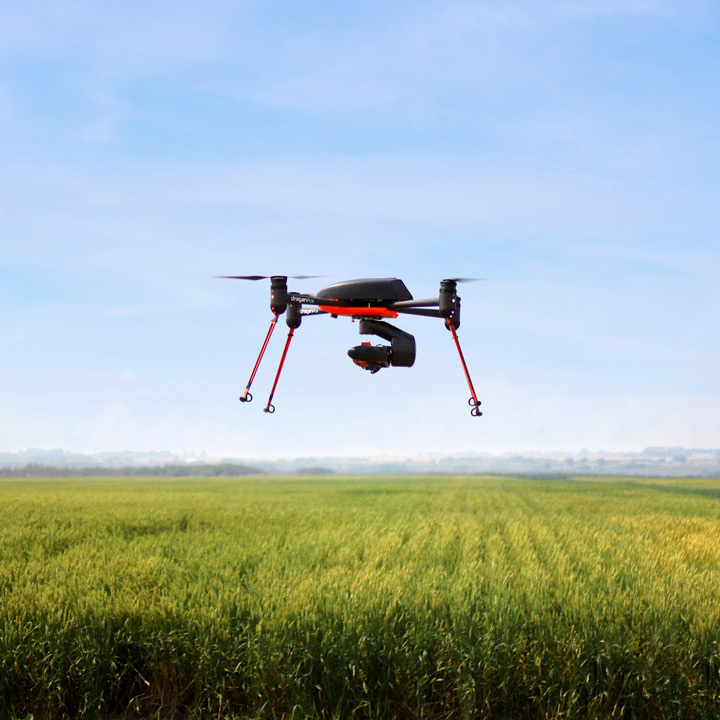
Be what the world needs
USask has been a world-leading university for years. It's time to let the world know about it.
By John GraingerUSask has much to brag about.
As a member of the esteemed top 15 Canadian research-intensive institutions of higher learning, USask has much of the equipment and expertise in place to create a better tomorrow for Canadians and global citizens. Research, teaching, and learning at USask is enhanced by an array of world-class facilities, faculty, and staff.
You might have seen these photos displayed throughout USask buildings, our website and on our social media channels. Each one tells a unique story of how USask is moving the needle in so many areas of research, innovation, and change to be what the world needs.
The USask field research site on the Athabasca Glacier in the Canadian Rockies helps the world understand the profound impact of climate change.

Here, researchers set up camp on the Peyto Glacier with the goal to measure the glacier’s thickness. Knowing how much ice is under their feet could determine how much meltwater it could produce in the upcoming decades. That critical research will unveil the impacts on more than just water supplies, but also the effects on cold water fish and ecosystems.
These are issues that need to be addressed now and USask researchers are at the forefront of these studies globally.
Teaching and learning at USask’s Sylvia Fedoruk Canadian Centre for Nuclear Innovation is placing Saskatchewan among global leaders in nuclear research.

USask has a time-honoured tradition of developing ground-breaking technologies, which can be dated back to the 1950s with the innovative cobalt-60 cancer treatment and diagnostic research led by physicist and former USask Chancellor Sylvia Fedoruk. This major technical development paved the way for future facilities like the Canadian Light Source.
The centre encourages an ongoing and respectful dialogue on the benefits and risks of nuclear technology as reliable supply of energy. As Canada shifts away from fossil fuels, more research and understanding into renewable energies is inevitable.
Agriculture is a staple of Saskatchewan's economy and USask research will help unlock new ideas and practices that will enhance production techniques.

Imagine a drone loaded with software flying over the endless prairie that can keep an eye on livestock and their health. Imagine a drone flying over a golden field of canola sending critical data back for the advancement in seed technology.
Smart farming has arrived and will analyze scientific data so producers around the world can make better informed decisions on farm management.
USask is seen as a leader amongst Canadian universities in its commitments and actions to Reconciliation and Indigenization, a critical role within the province and the country.

For nearly 30 years, USask has hosted a Graduation Powwow on the Saskatoon campus, situated on Treaty 6 Territory and the Homeland of the Métis. Indigenous dancers are seen here at the inaugural convocation ceremonies held at Merlis Belsher Place in 2019.
USask will continue to build partnerships and relationships with Indigenous peoples not only in Saskatchewan, but across the country.


